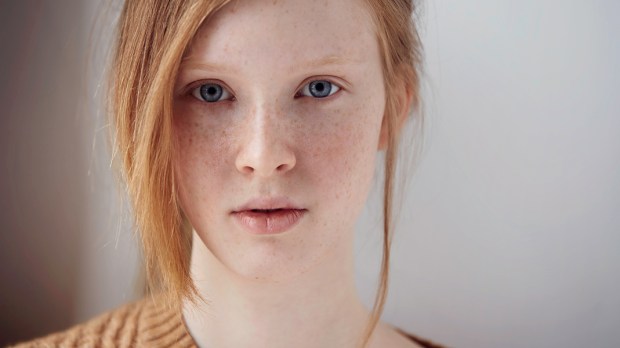My desire to be unique goes back as far as my memory does. A self-identified tomboy in childhood, I have a vivid memory of attempting to convince my second grade classmates, who were passing around a tube of hot pink lipstick, that I didn’t even know what lipstick was, let alone wear it.
“Are you saying you’ve never heard the word lipstick before?” asked Katy, a self-identified girly-girl whom I envied for her glossy, hip-grazing black hair.
I don’t remember how I responded, but I’m sure it didn’t make much sense.
I can’t explain why I thought anyone would buy such an extreme exaggeration, but I recognize the impulse underpinning it. For as long as I can remember, I’ve felt a strong desire to assert my independence from the crowd. At seven years old, that meant rejecting the sparkling Lip Smackers and Mary Jane shoes that were popular among my peers at the time. But as the years went on, my contempt for the ordinary manifested in myriad ways, sometimes as a simple rejection of whatever everyone else seemed to like and other times as a sort of performative quirkiness.
Meanwhile Katy, whose name is not actually Katy, went on to become a cheerleader in high school. She wore Hollister sweatshirts and drank Frappuccinos and posted duck-lip selfies on MySpace and then Facebook—she was “basic” before basic became a thing.
As embarrassing as it is in hindsight, I think my aversion to norms was rooted in a genuine desire to apply a lesson I’d been taught my whole life: to accept myself for who I truly am and avoid pretending to be someone I’m not. In my mind, blending in or getting swept up in mainstream trends was evidence of a failure to do so.

Read more:
What’s your unique giftedness? The world needs it right now
It’s hard to trace this notion to its source, but I recognize it in the way we continue to discuss self-acceptance today. A Google search for “quotes about being unique” will return hundreds of memes with sparkling letters saying things like “fitting in is boring,” or “don’t be afraid of being different, be afraid of being the same as everyone else” or “Be unique. Be different. Be you,” or “Being the best is great. I’m number one. But being unique is better. I’m the only one.” There are no corresponding memes advising that it’s okay to blend in, perhaps because we take for granted that blending in easier to do. But there’s no doubt that in the push to encourage people to be themselves, we show a clear preference for nonconformity.
And yet, years later, I can’t help but suspect that in all her Aeropostale-wrapped glory, Katy was closer to self-acceptance than I was.
This didn’t crystallize for me until college, when I was introduced to the writings of Thomas Merton.
For Merton, being yourself is essential to sainthood. “Many poets are not poets for the same reason that many religious men are not saints: they never succeed in being themselves,” he writes in New Seeds of Contemplation. To insist on being someone you are not is “as much as saying that you know better than God who you are and who you ought to be.”
Yet while Merton vehemently warns against the “intense egoism” of following the crowd, he also stresses that it requires “heroic humility” to be “precisely the person you actually are before God.” And as far as material needs are concerned, those with the humility to be themselves “can be quite content with whatever satisfies the general run of men.” In other words, true individuality means accepting the ways that our authentic selves are not so different from anyone else.
This is not to say that we have to sacrifice uniqueness to be ourselves. On the contrary, he stresses that if you succeed in being yourself, “you will not be like anyone else in the whole universe.” It’s just that that uniqueness has little to do with outward conformity or nonconformity. “This individuality will not necessarily assert itself on the surface of everyday life,” Merton explains, “It will not be a matter of mere appearances, or opinions, or tastes, or ways of doing things. It is something deep in the soul.”
The lesson here is that obsessing over “standing out” can be just as much an obstacle on the journey to true self-discovery as striving to blend in can. Being oneself requires detaching from both. “To make conformity or nonconformity with others in these accidents a matter of life and death is to fill your interior life with confusion and noise,” Merton explains, “Ignoring all this as indifferent, the humble man takes whatever there is in the world that helps him to find God and leaves the rest aside.”
There is, of course, a real danger in the pressure to conform, and it is good that we encourage children to resist it for the sake of self-acceptance. But if Merton is correct, focusing too much energy on proving to the world that they are different from everyone else can distract them from that very goal.
I think this detachment from conformity or nonconformity is what I sensed in Katy all those years ago. It is impossible to know what was in her heart or mind, but she did not seem to be searching for her individuality in the accidents of life, and in that way, may have been closer to actually finding it.

Read more:
St. Hildegard’s advice for building healthy self-confidence

